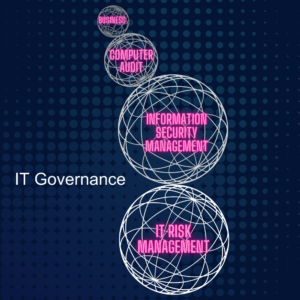In today’s fast-paced technological landscape, businesses face the tremendous challenge of aligning IT initiatives with overarching business objectives. This alignment is crucial for optimizing performance, mitigating risks, and ensuring regulatory compliance. Herein lies the importance of IT Governance. Understanding and implementing effective IT Governance can significantly bolster a company’s success by aligning IT strategy with business goals and ensuring all stakeholders work towards common objectives.
What is IT Governance?
IT Governance is the strategic framework that ensures that IT investments are supported and aligned with business goals. It involves structures, processes, and relational mechanisms that help organizations achieve their objectives while mitigating risks and optimizing performance. IT Governance encompasses various activities, including risk management, compliance, resource management, and performance measurement.
Importance of IT Governance
The importance of IT Governance cannot be overstated. Here are some of the primary benefits it offers:
- Enhanced Alignment with Business Goals: IT Governance ensures that IT strategy aligns with business objectives, improving the synergy between technology and business operations.
- Optimized Resource Utilization: IT governance maximizes the returns on IT investments by managing and allocating resources effectively.
- Risk Management: A robust IT Governance framework identifies, assesses, and mitigates IT systems and processes risks.
- Regulatory Compliance: IT Governance ensures adherence to relevant regulations, thus avoiding legal pitfalls and financial penalties.
- Performance Measurement: It enables the establishment of key performance indicators (KPIs) to measure and monitor IT performance against business goals.
Key Components of IT Governance
To implement a successful IT Governance framework, it is crucial to understand its key components:
1. IT Strategy Alignment
Aligning IT strategy with business goals is the cornerstone of IT Governance. This involves understanding the business’s vision, mission, and strategic objectives and developing an IT strategy that supports and enhances these aims.
2. Performance Management
Performance management involves setting KPIs and metrics to measure IT performance and contribution to business goals. Regular monitoring and reporting ensure that IT initiatives remain aligned with business objectives.
3. Risk Management
Risk management in IT Governance focuses on identifying potential risks, assessing their impact, and establishing controls to mitigate them. This protects the organization and ensures the reliability and security of IT systems.
4. Resource Management
Efficient resource management ensures that IT resources, including personnel, budgets, and technology, are used effectively and aligned with business priorities.
5. Compliance and Regulatory Management
Organizations must comply with various regulations and standards. IT Governance frameworks help manage compliance, thereby avoiding legal issues and penalties.
Frameworks for Implementing IT Governance
There are several established frameworks that organizations can use to implement IT Governance. Some of the most widely adopted ones include:
COBIT (Control Objectives for Information and Related Technologies)
COBIT is a comprehensive framework that provides the best IT management and governance practices. It covers processes, risks, and control objectives, ensuring IT effectively supports business goals.
ITIL (Information Technology Infrastructure Library)
ITIL is a set of practices for IT service management that aligns IT services with business needs. It emphasizes delivering high-quality IT services through standardized processes.
ISO/IEC 38500
The ISO/IEC 38500 standard provides guidelines for IT corporate governance. It helps organizations ensure that IT investments generate business value and manage IT risks effectively.
Best Practices for IT Governance
Implementing IT Governance requires a strategic approach and adherence to best practices. Here are some key recommendations:
1. Involve Stakeholders
Engage stakeholders from various departments to ensure the IT Governance framework aligns with the organization’s overall strategy and goals.
2. Define Clear Roles and Responsibilities
Establish clear roles and responsibilities for IT and business teams to ensure accountability and effective decision-making.
3. Establish Effective Communication Channels
Promote open communication between IT and business units to ensure mutual understanding and alignment of objectives.
4. Continuous Monitoring and Improvement
IT Governance is a continuous process. Review and refine the framework regularly to adapt to changing business needs and technological advancements.
5. Educate and Train Staff
Invest in training and educating staff on the importance of IT Governance and their role in implementing it effectively.
Challenges in IT Governance
Implementing IT Governance can be challenging. Some common obstacles include:
- Resistance to Change: Employees may resist new processes and structures.
- Complexity: IT Governance frameworks can be complex, requiring detailed understanding and meticulous implementation.
- Resource Constraints: Limited resources can hinder the effective implementation of IT Governance.
Overcoming these challenges requires strong leadership, effective communication, and a commitment to continuous improvement.
Conclusion
IT Governance is essential for any organization to align its technology initiatives with business goals. Adopting a robust IT Governance framework allows businesses to optimize performance, manage risks, ensure compliance, and achieve their strategic objectives. Investing time and resources into understanding and implementing IT Governance is necessary and a strategic advantage in today’s technology-driven world.
Understanding that IT Governance is a dynamic and ongoing process, companies must continually adapt and refine their strategies to stay ahead in the competitive landscape. Commitment to best practices, stakeholder engagement, and effective resource management will ensure that IT Governance continues to drive business success.

